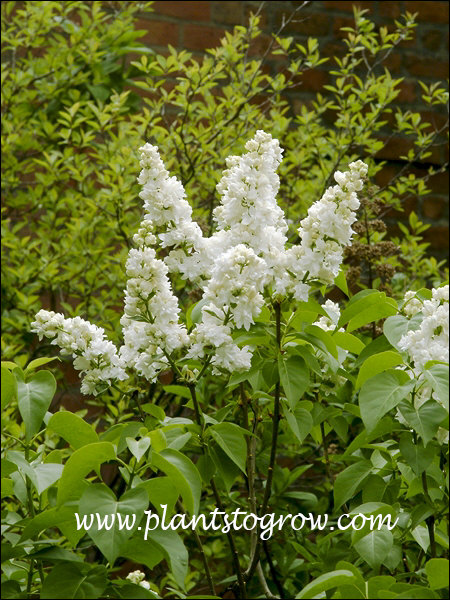| Description | A white flowering Lilac. |
|---|---|
| Pronunciation | (si-RING-A)(vul-GAR-is) |
| Plant Type | All Plants, Shrubs Deciduous |
| Hardiness Zone | 4-7 |
| Sunlight | full, I have been asked many times "Why doesn't my Lilac flower as good as before". The reason is usually the amount of light. Many plants get less light as the trees grow larger around them. Also Lilacs are plant in one direction light. This means one side flowers more than the other |
| Moisture | average |
| Soil & Site | average, doesn't like soggy wet |
| Flowers | white, borne on a panicle |
| Fruit | beaked dehiscent capsule |
| Leaves | opposite, simple, glossy green leaves that can suffer from powdery mildew in the fall |
| Stems | prominent lentilcels |
| Dimensions | 8-10 feet high by 1/2 to 3/4 spread, too large for use near the house, best used as specimen plants or in shrub borders, can be used on corner plantings as long as given 6-8 feet from the corner |
| Maintenance | There are many different ways to prune a Lilac. The most drastic is to cut them down to the ground. Using this method I have had ones sucker back and regrow while others that didn't make. You can cut out the old stems and let the new suckers fill in thinning them to the desired amount. On many old plants we have removed all the suckers and left a few of the old stalks. Pruning them up to bare base stems, turning the plant into a small tree. Width can be controlled by pruning them back 1-2 or more nodes. Drastic pruning may delay flowering a few years. Since Lilacs bloom on next season’s wood, prune after they are done blooming |
| Propagation | cuttings, digging suckers |
| Misc Facts | Lemoine, 1890 |
| Notes & Reference | #01-Manual of Woody Landscape Plants (Michael Dirr), #104-Lilacs A Gardeners Encyclopedia (John Fiala) |

Cart


